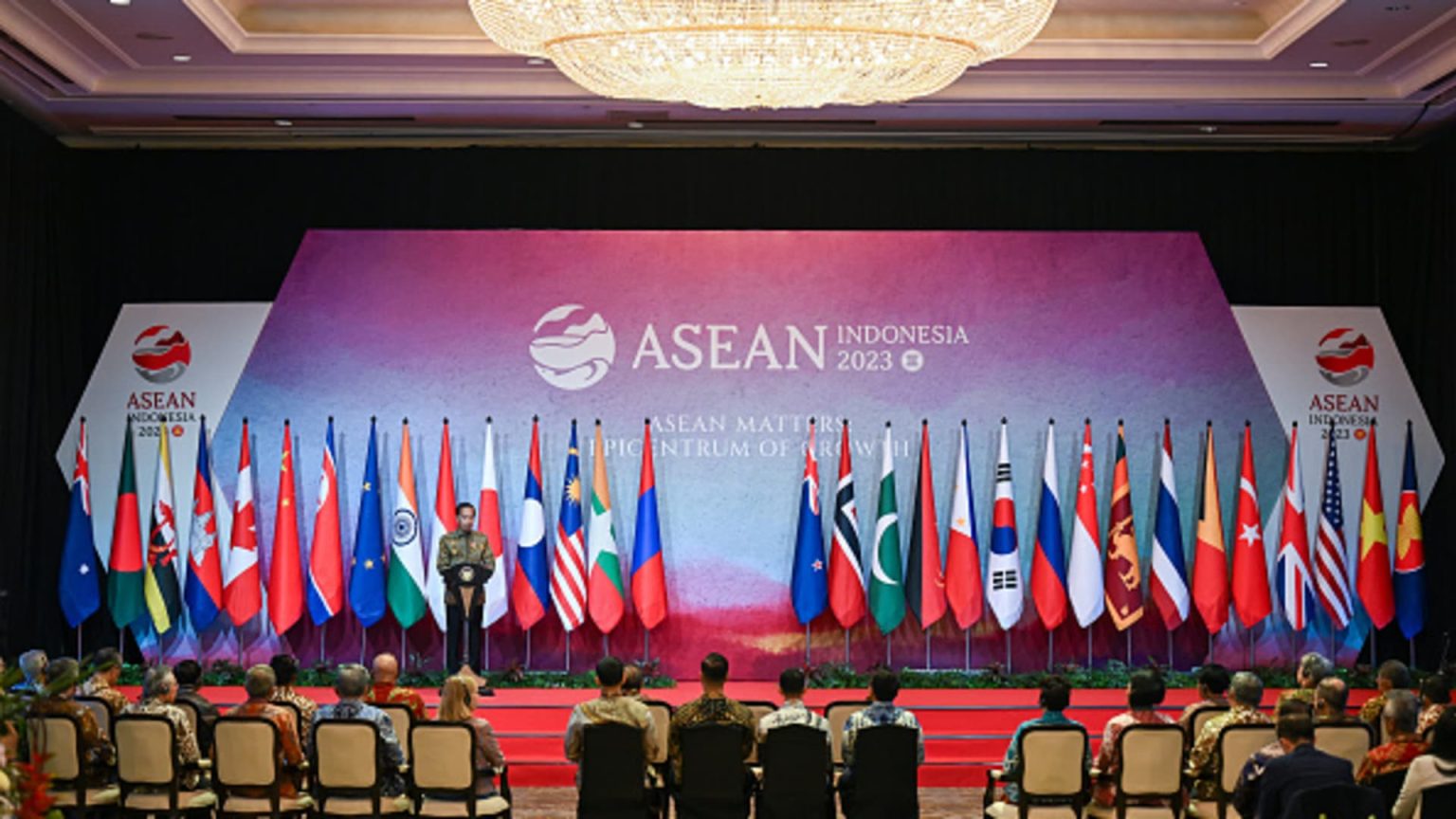Indonesian President Joko Widodo makes a speech during the Association of Southeast Asian Nations (ASEAN) Foreign Minister’s Meeting in Jakarta, Indonesia on July 14, 2023.
Murat Gok | Anadolu Agency | Getty Images
A new regional cross-border payment system recently implemented by Southeast Asian nations could deepen financial integration among participants, bringing the ASEAN bloc closer to its goal of economic cohesion.
The program, which allows residents to pay for goods and services in local currencies using a QR code, is now active in Indonesia, Malaysia, Thailand and Singapore. The Philippines is expected to join soon.
That’s according to each country’s respective central bank.
The move comes after the five Southeast Asian countries signed an official agreement late last year. At the recent ASEAN summit in May, leaders also reiterated their commitment to the project, pledging to work on a road map to expand regional payment links to all ten ASEAN members.
The scheme is aimed at supporting and facilitating cross-border trade settlements, investment, remittance and other economic activities with the goal of implementing an inclusive financial ecosystem around Southeast Asia.
Analysts say retail industries will particularly benefit amid an expected rise in consumer spending, which could in turn strengthen tourism.
Regional connectivity is considered crucial to reduce the region’s reliance on external currencies like the U.S. dollar for cross-border transactions, particularly among businesses. The greenback’s strength in recent years has resulted in weaker ASEAN currencies, which hurts those economies since the majority of the bloc’s members are net energy and food importers.
“The system will forgo the U.S. dollar or the Chinese renminbi as intermediary,” said Nico Han, a Southeast Asia analyst at Diplomat Risk Intelligence, the consulting and analysis division of current affairs magazine The Diplomat.
A unified cross-border digital payment system will “foster a sense of regionalism and ASEAN-centrality in managing international affairs,” he added. “This move becomes even more crucial in light of escalating tensions among major global powers.”
How it works
By connecting QR code payment systems, funds can be sent from one digital wallet to another.
These digital wallets effectively act as bank accounts but they can also be linked to accounts with formal financial institutions.
For instance, Malaysian tourists in Singapore can make a payment with Malaysian ringgit funds in their Malaysian digital wallet when making a transaction. Or, a Malaysian worker in Singapore can send Singapore dollar funds in a Singaporean digital wallet to a recipient’s wallet in Malaysia.
Fees and exchange rates will be determined by mutual agreement between the central banks themselves.
For now, a region-wide system like this doesn’t exist in other parts of the world but down the road, the Bank of International Settlements, based in Switzerland, hopes to connect retail payment systems across the world using QR codes and mobile phone numbers.
“The ASEAN central banks’ effort is innovative and novel,” said Satoru Yamadera, advisor at the Asian Development Bank’s Economic Research and Development Impact Department.
“In other regions like Europe, retail payment connection via credit and debit cards is more popular while China is well-known for advanced QR code payment, but they are not connected like the ASEAN QR codes,” he continued.
Economic benefits
QR payments don’t impose fees on cardholders and merchants. They also boast of better conversion rates than those set by private payment processors like Visa or American Express.
Micro enterprises as well as small- and medium-sized businesses, or SMBs will emerge as winners from regional payment connectivity, experts say. According to the Asian Development Bank, such companies account for over 90% of businesses in Southeast Asia.
“SMBs can avoid the expenses associated with maintaining a physical point-of-sale system or paying interchange fees to card companies,” explained Han from Diplomat Risk Intelligence.
Marginalized individuals from low-income backgrounds also stand to benefit. As the payment system works via digital wallets and doesn’t require a traditional bank account, it can be used by the unbanked population.
“The system has the potential to improve financial literacy and wellbeing for the underbanked population,” Han noted.

ASEAN’s new system will also enable merchants and consumers to build a robust payment history, and provide valuable data for credit scoring, said Nicholas Lee, lead Asia tech analyst at Global Counsel, a public policy advisory firm.
“That’s particularly advantageous for unbanked and underbanked segments of the population, who traditionally lack access to such credit assessment data.”
Moreover, “increased non-cash transactions would allow policymakers to capture transaction data and trade flow more effectively, assuming these data are accessible,” said Lee.
“This, in turn, could lead to better economic forecasting and policymaking.”
Currency pressure ahead
While strengthening payment connectivity within the region has the potential to reduce payment friction and accelerate digital transition, it could inadvertently put pressure on certain currencies, particularly the Singapore dollar.
“The potential scenario of the [Singapore dollar] emerging as a de facto reserve currency within the region poses a challenge that ASEAN states will need to confront,” said Lee.

“With the [Singapore dollar’s] strength and stability, both international and regional businesses may opt to hold more of their working capital in [Singapore dollars], relying on the new payment network for efficient currency conversion,” he explained.
If that happens, it could weaken the purchasing power of other currencies in the region and result in higher imported inflation if central banks don’t intervene.
In such a scenario, authorities may feel the need to impose capital restrictions in order to protect their respective currencies, which could undermine the very purpose of establishing a regional payment network.
Regulations pose another challenge.
Central banks will have to address security and fraud issues, plus undertake the task of educating the public to embrace the new payment system, said Han.
“These factors can collectively contribute to a time-consuming process,” he warned.
This kind of coordinated action will require strong political will from regional leaders and it remains to be seen if ASEAN members can come together to successfully implement such an ambitious venture.
Read the full article here




